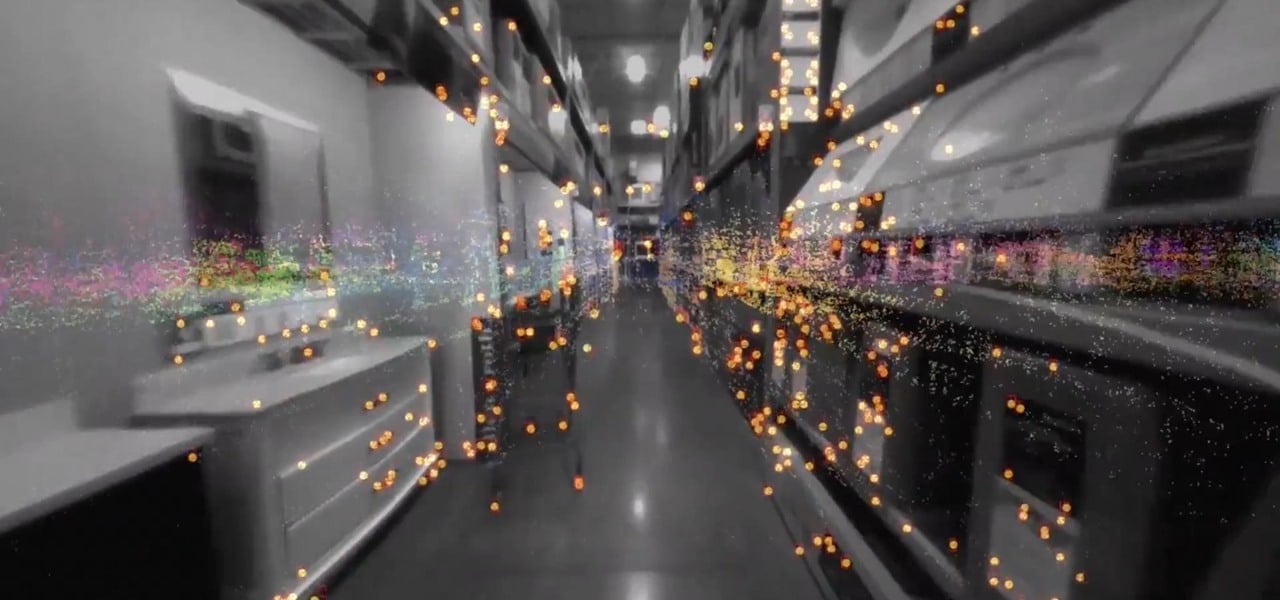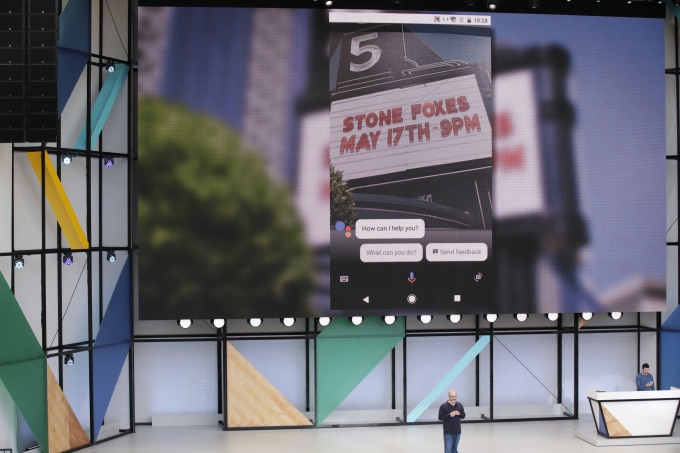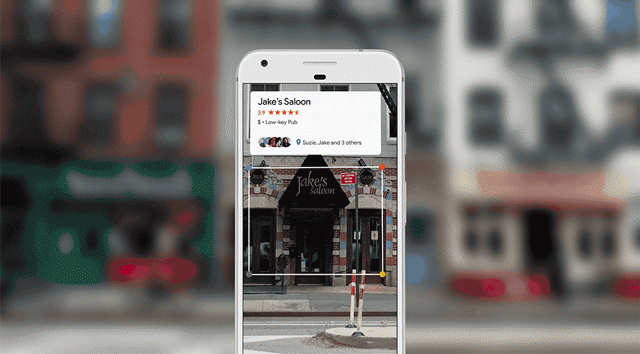
Google has been making big moves in AR. Building from momentum with Tango, the recent I/O conference spotlighted new ways to map building interiors (VPS), and use the smartphone camera to identify items in the real world (Google Lens).
The latter is a form of “visual search,” involving computer vision and machine learning to scan and identify physical objects. This could be a key technology for Google to boost search queries, it’s biggest source of revenue… they’ll just include visual searches in addition to text.
VPS-fueled Indoor mapping could meanwhile help Google measure/prove search marketing ROI by tracking consumers all the way to the cash register. Built on Tango, it applies “area learning” to map indoor spaces as a foundation for visual search and AR apps still to come.
Visual Position Worth a Thousand Words

The way VPS works is by applying computer vision via smartphone camera to scan interior spaces and form a “point cloud.” That unique digital fingerprint then becomes the basis for positional tracking, indoor navigation and overlaying practical information.
The go-to example is overlaying positional data for store shelves and the items they carry. As already pioneered by interior mapping companies like Aisle411, shoppers can then find obscure items in retail spaces, solving a common pain point.
“GPS can get you to the door, and then VPS can get you to the exact item that you’re looking for,” said Google’s VR/AR lead Clay Bavor at I/O. “Imagine in the future your phone could just take you to that exact screwdriver and point it out to you on the shelf.”
This is not necessarily a new message because Beacon proponents have been saying this for years. VPS is a superior technology, but its optical and sensory components have been cost prohibitive for smartphone integration. Moore’s law will change that over the next 1-2 years.
But it goes beyond the utility of finding things and saving people time, though the latter is the most underrated success factor of any tech product. The real angle here is the ad attribution potential mentioned above, given that it tracks the “last mile” to the cash register.
There, the ties to Google’s ad business are pretty clear. This is just the latest in its march to embolden a search marketing value proposition with a better ROI story. And it knows the way to do that is track the dollars where they’re mostly spent: offline and locally.
The New Search Box

But the bigger moment in Google’s I/O bonanza was Google Lens. Like Tango and VPS, this is a computer vision technology that uses machine learning to identify visual content. It basically turns your camera into a search box.
Though the overt use case is organizing your Google Photos albums, the meatier implication is identifying storefronts. An unfulfilled promise of Google Goggles, this will let you scan building exteriors with your phone’s viewfinder to reveal identifying info and reviews.
This vision of AR is discussed a lot, but Google has the data backbone — place database and Street View imagery — to actually pull it off. We often forget that local AR will need lots of geotagged content to be a meaningful and populated experience.
This also opens up an opportunity for anyone who’s in the business of local data or listings optimization (i.e. Yext). Their already-proven value in the world of mobile search could be accelerated by the need for properly geotagged data to populate local AR apps like Google Lens.
And that’s where it all comes together for Google. We’ve long discussed its moves to counterbalance the smartphone-induced decline of search volume and CPCs. Google Assistant and “micromoments” were one answer; Visual search and VPS will be the next.
That means these technologies will play a part in protecting Google’s $48 billion search business. Combined with investments in VR (Daydream) and AR (Tango), Google will put lots of muscle behind VPS. And anything Google is that motivated to drive is worth betting on.

For a deeper dive on AR & VR insights, see ARtillry’s new intelligence subscription, and sign up for the free ARtillry Weekly newsletter.
Disclosure: ARtillry has no financial stake in the companies mentioned in this post, nor received payment for its production. Disclosure and ethics policy can be seen here.
